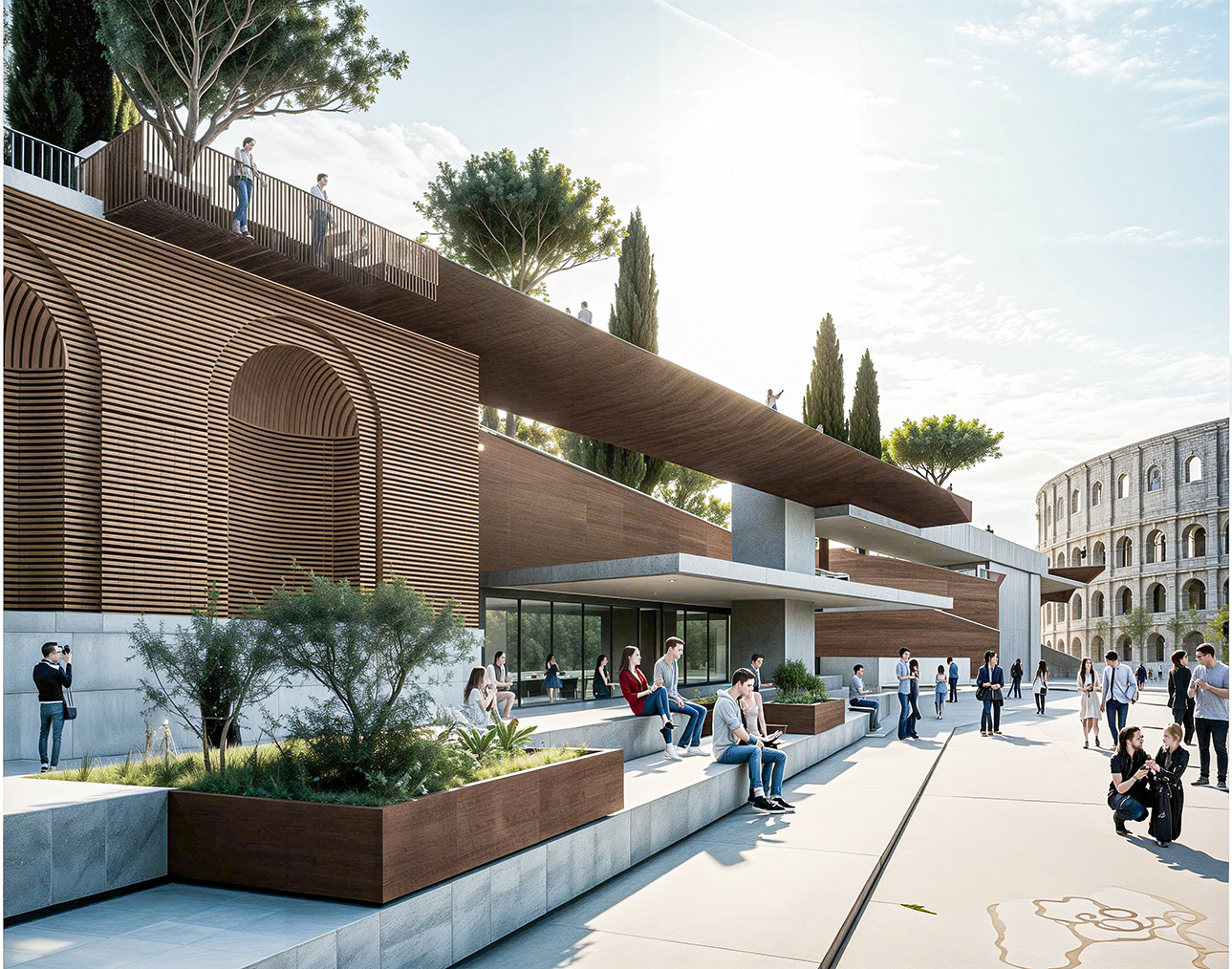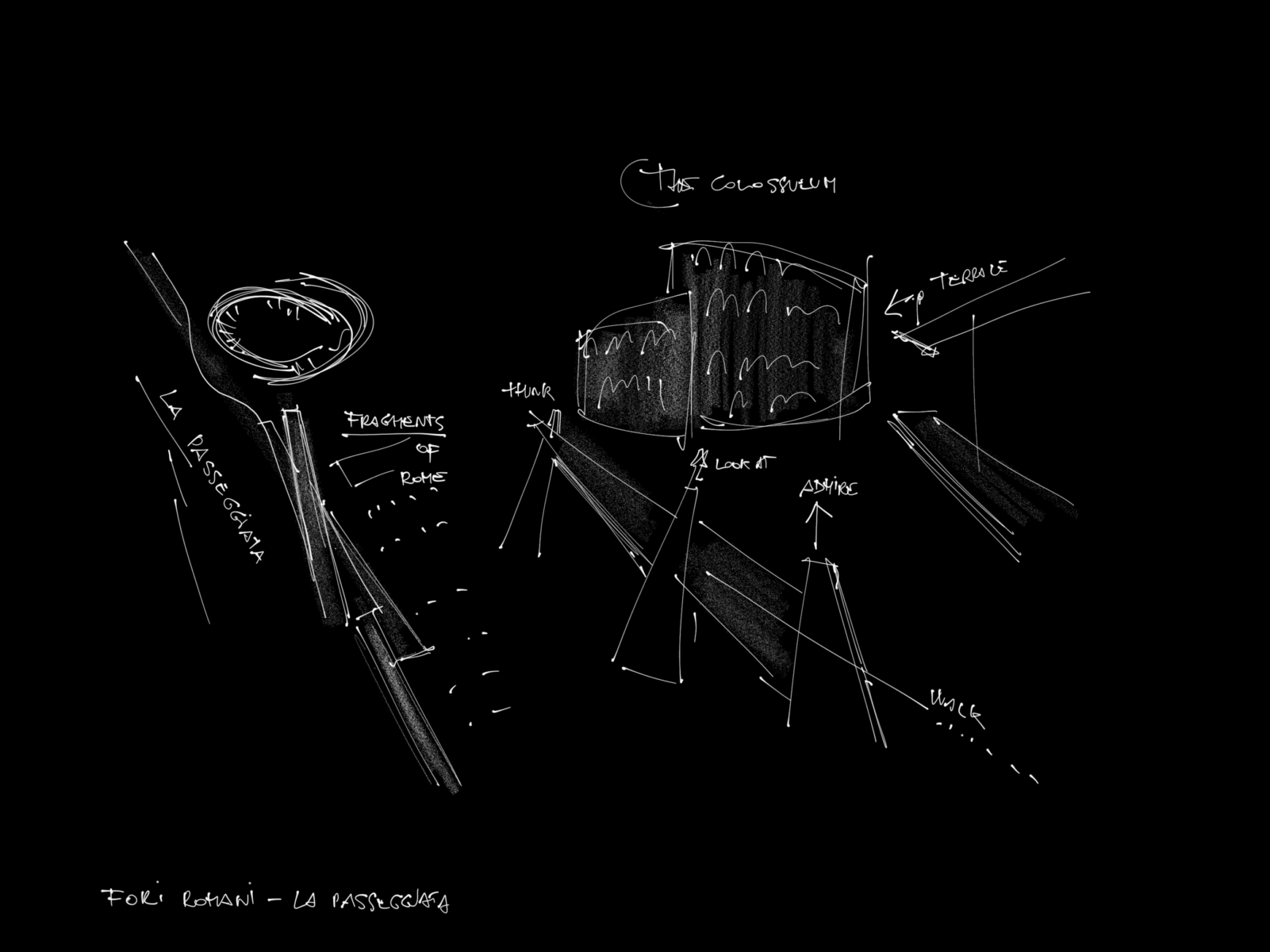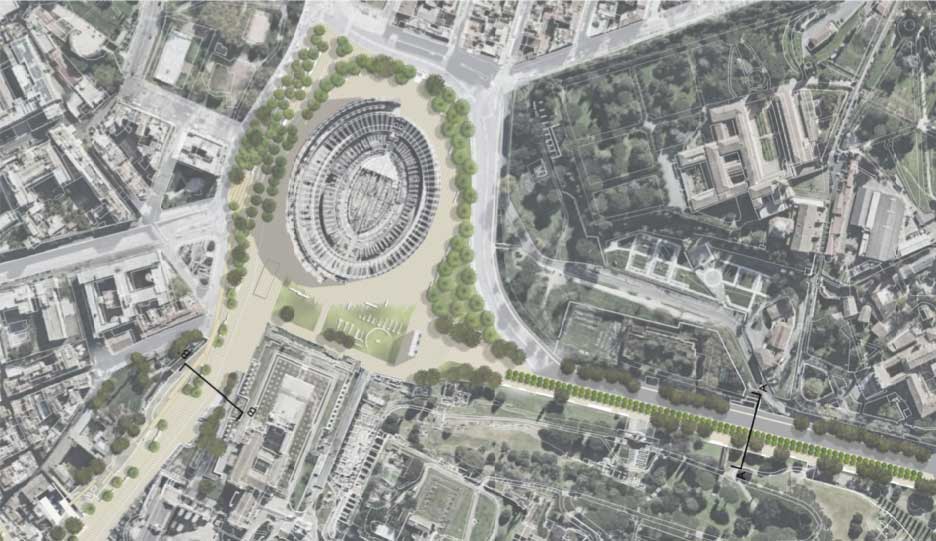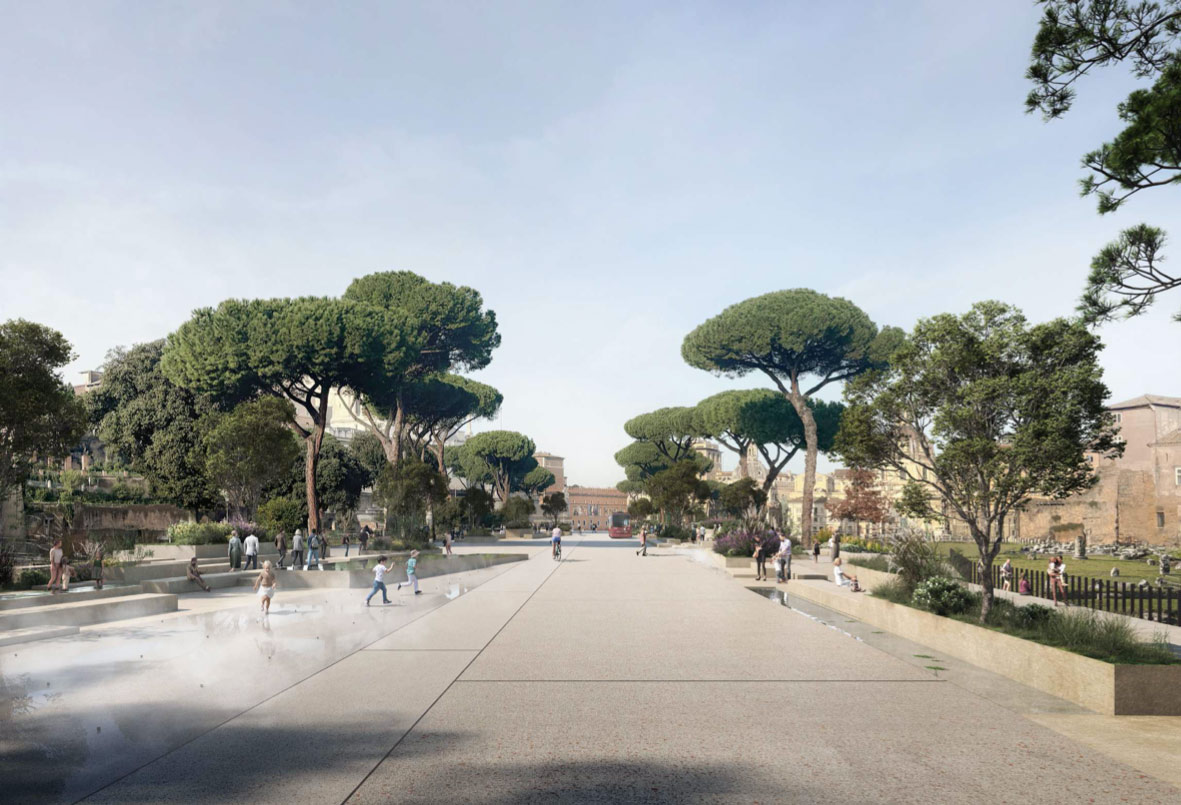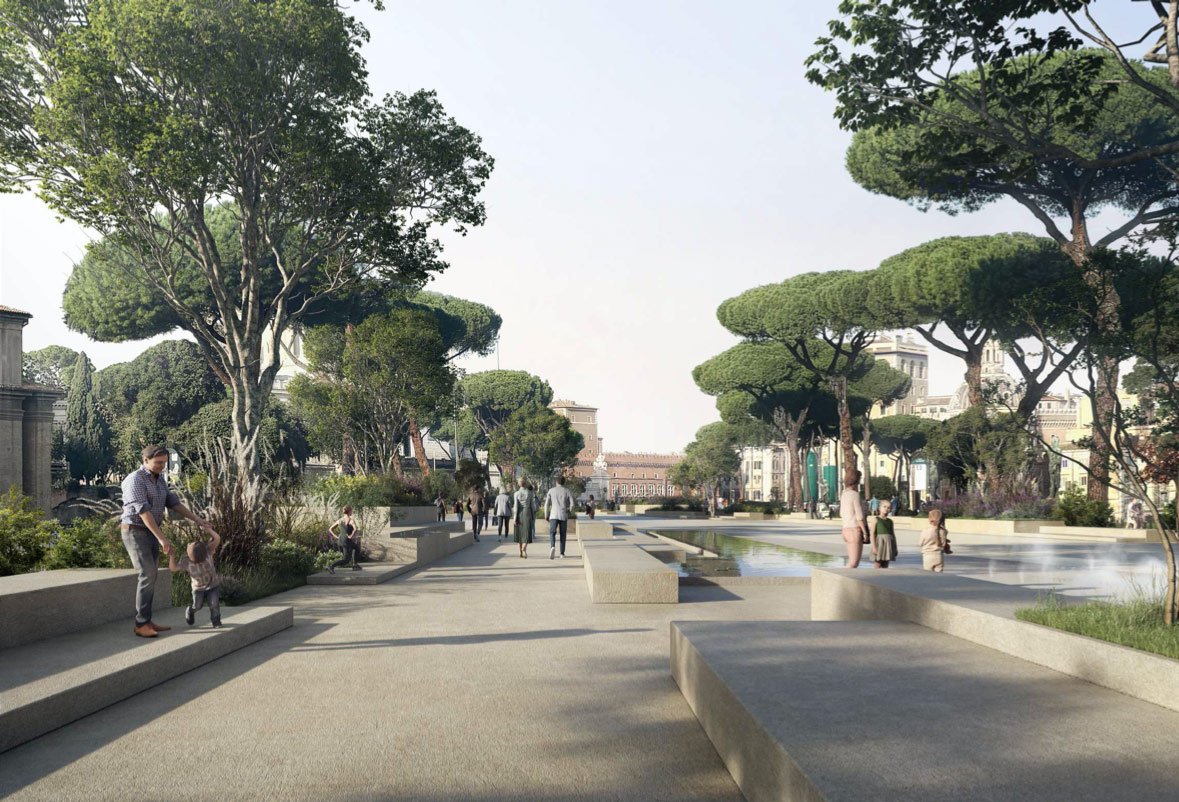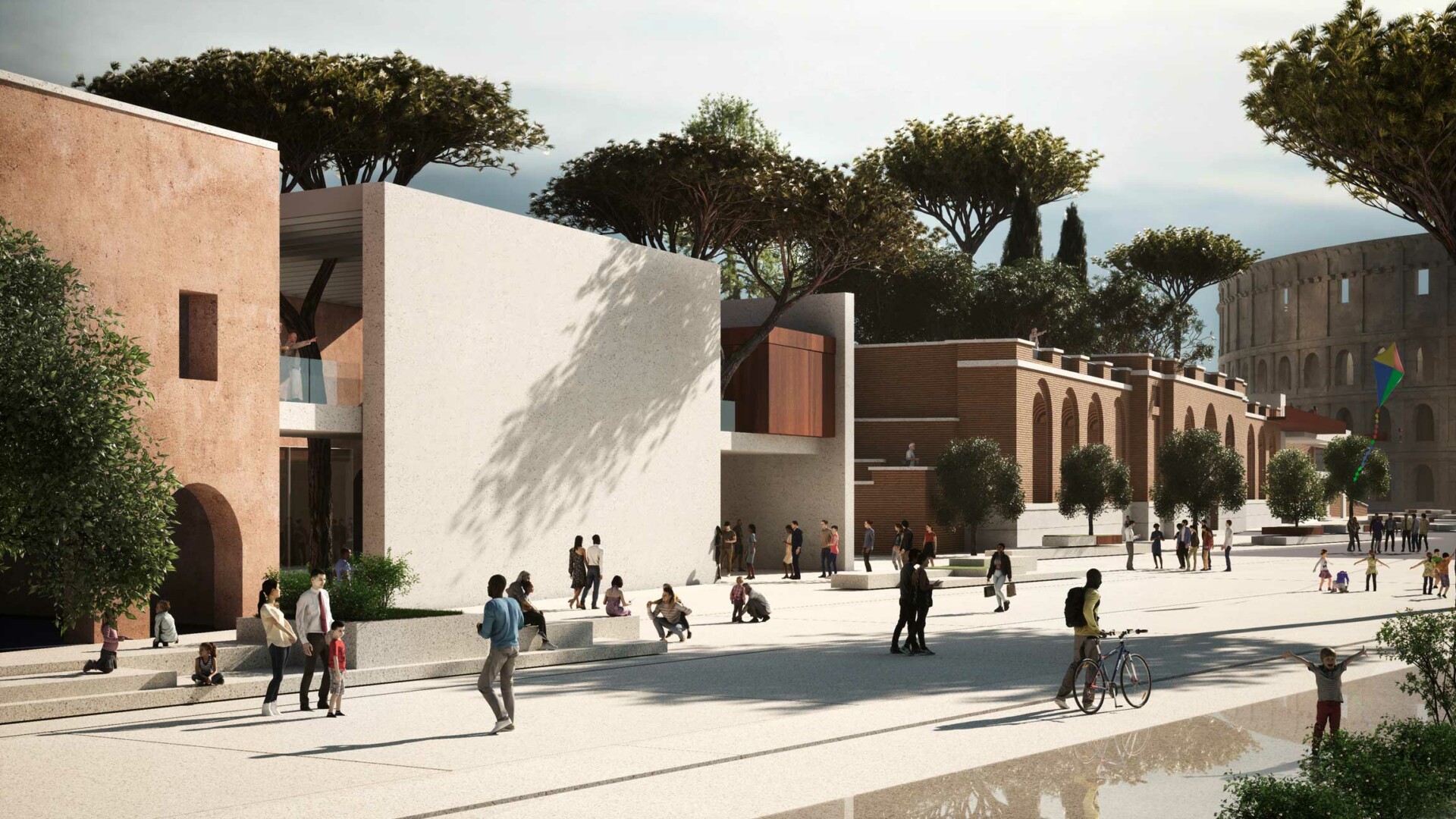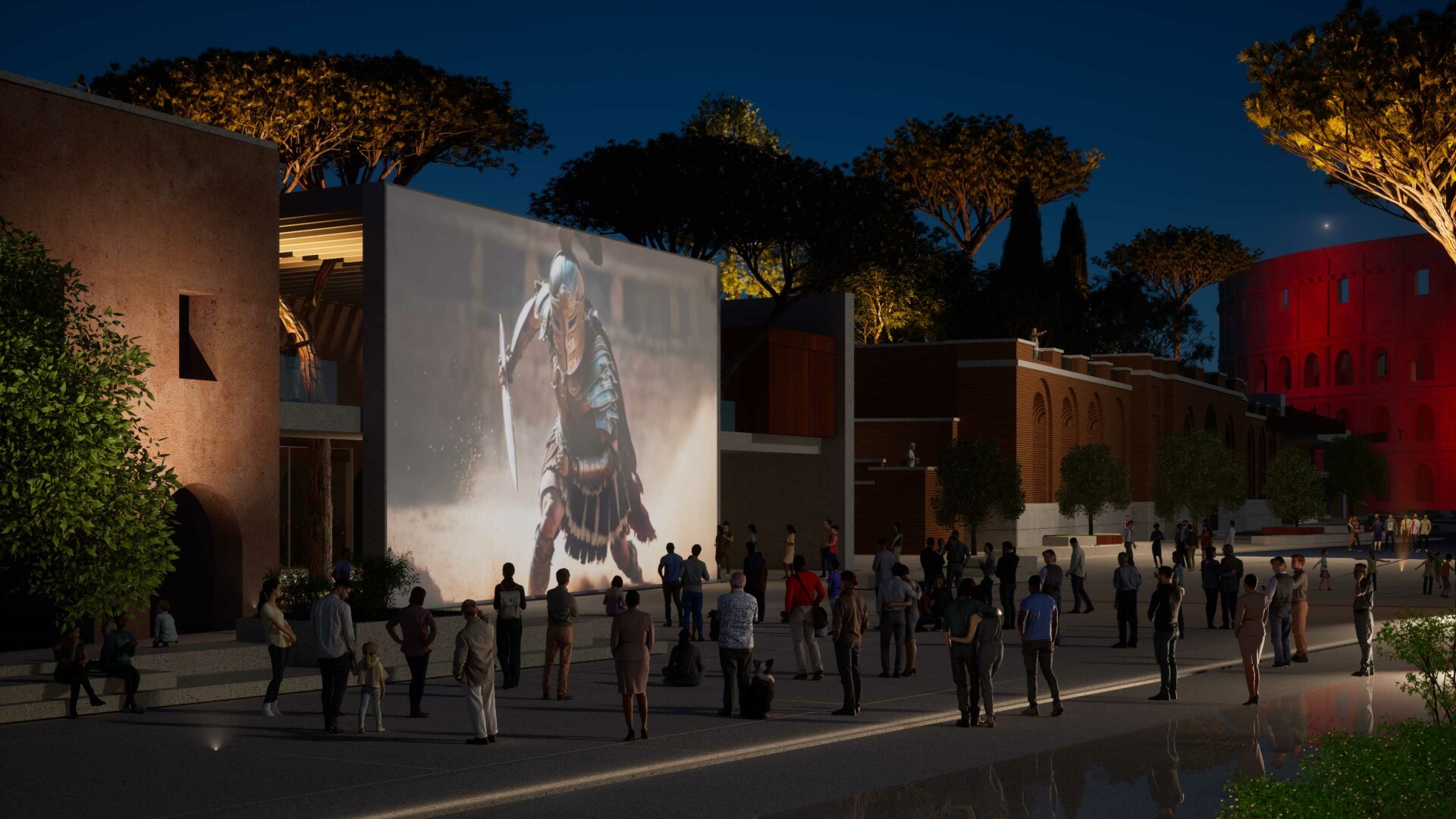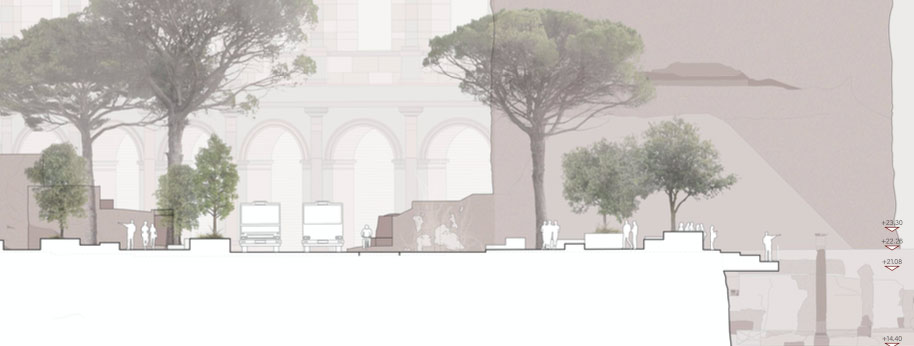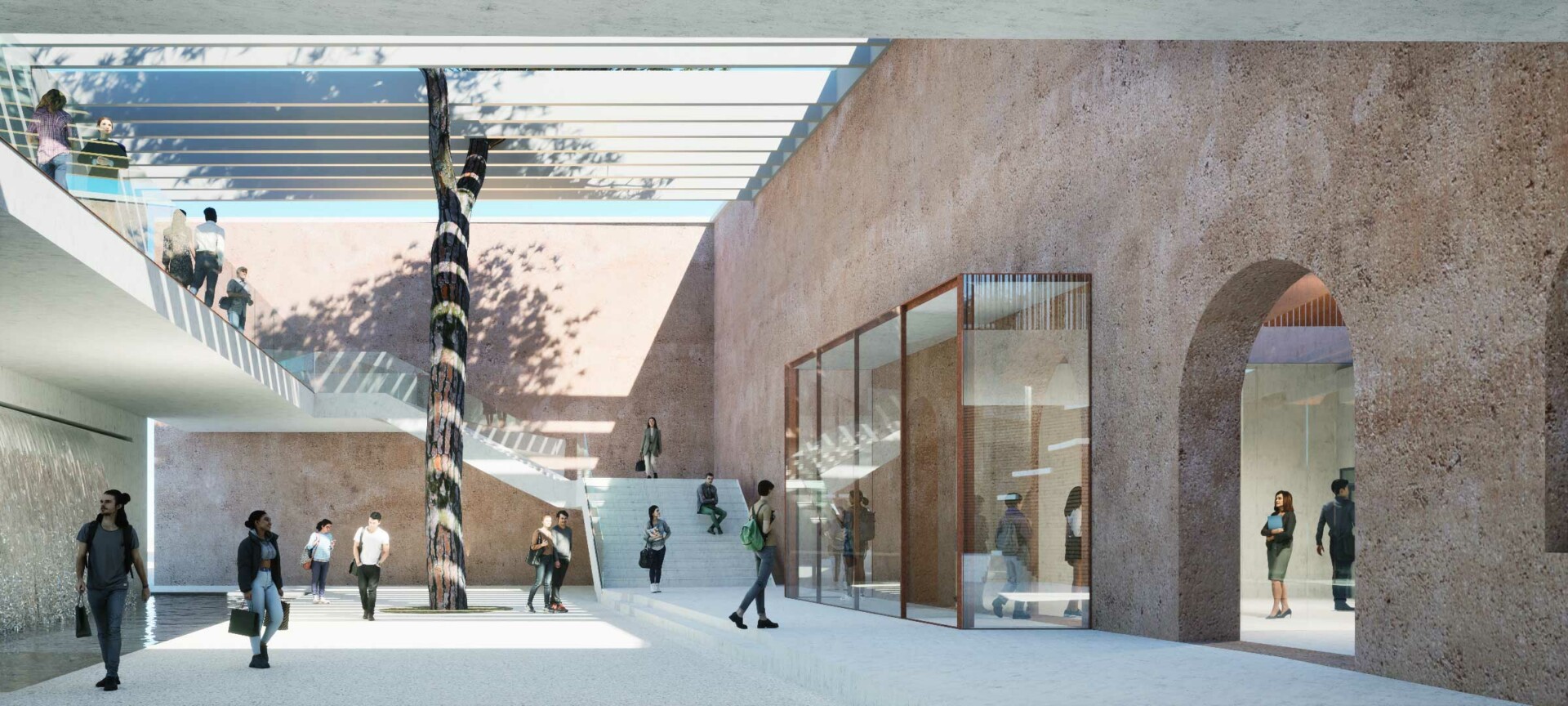The New Archaeological Promenade of the Imperial Forums in Rome
The New Archaeological Promenade International design competition for interventions in the area of the Imperial Forums
The new design for Via dei Fori Imperiali is configured as a project to re-signify the historical traces that have contributed, over time, to the creation of the current shape of this extraordinary part of the city.
In our design proposal we intend to restore the stratification that had seen Rome grow on itself from the ancient empire to the pre-unification city. Recreate the discovery of ancient ruins in proximity to daily needs. The objective is therefore the cancellation of the rectilinear axis that connects Piazza Venezia to the Colosseum, the abandonment of a hasty high-speed view to restore a slow vision, typical of the pedestrian who reveals the archaeological remains in sequence. The ancient position of the Colosseum in the center of Lake Nero will be an inspiration for the new arrangement of the entire area. The severity, the grandeur, the isolated monuments, will give way to a new vision, closer to the original one prior to the gutting intervention desired by Mussolini.
The new info-point aims to be a meeting point and starting point for tourists to visit the entire archaeological area; it will be the connecting link between the level of the current Via dei Fori Imperiali and the one above the wall created by Muñoz.
The idea of a pedestrian street at altitude aims to create an unprecedented perspective point of view on the archaeological area. It will connect the info-point, Via del Tempio della Pace, Palazzo Silvestri Rivaldi, Largo Gaetano Agnesi, Via Nicola Salvi, Via dei Fori Imperiali.
Leaving the brick and travertine wall designed by Muñoz intact, the new elevated walkway will generate new views of the Colosseum, the Basilica of Maxentius and the Temple of Venus, new iconic scenarios, destined to enrich the new “archaeological walk”.
The objective on which the project bases its reasons for being is constituted by the desire to recompose the space of the entire archaeological area starting from the idea that the role of architecture and landscape, in the relationship between new and old, must be capable of constituting itself as an element capable of redefining the identity and recognisability of the place itself through what David Chipperfield defines as “Common Ground”, the space between things, the ground, a stratified element that contributes to forming the spatial continuum of the city.
The key element that the project tries to build is precisely the idea that links the fragments of the past to the necessary project of the new capable of making the entire archaeological area more usable and recognisable, the intervention is therefore defined as an inevitable change of gaze that considers the project as a generator of new perspectives that reinterpret the qualities of the places and the relationships between the spaces, the architecture, the city and the territory.
The traces and memories of the forum systems are read and brought “to the surface” becoming the elements that, with their positions, define the equipped spaces for staying, looking and knowing.
Location / Rome | Italy
Year / 2024
Client
/ Comune di RomaStage
/ International CompetitionTeam di Progetto
Design Team
/ Obicua s.r.l. - Luigi Filetici - Form-A - PROAP Estudios e Projectos de Arquyitectura paisagista - Federica Galiffa - Silvia Pissagro - Stefano MattozziMEP
/ Hydroingea srl




